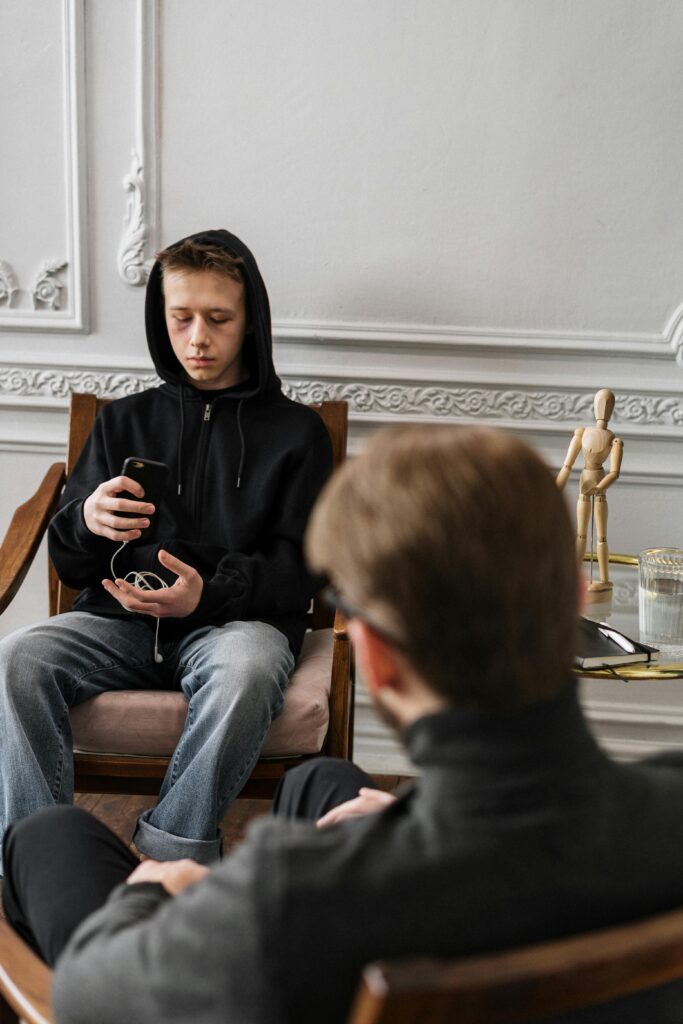Adolescents, Social Media, and the Silent Cry: Understanding Self-Harm and Suicide in a Filtered World
“There is no such thing as a casual suicide.”
In recent years, clinicians working with adolescents have witnessed a troubling shift: acts of self-harm and even suicide attempts often emerge without overt signs of despair or expressed suicidal ideation. What can seem “casual,” even aestheticized online, frequently conceals a profound, unformulated cry for recognition. In the age of social media, some adolescents harm themselves not to die—but to be seen.
How are we to understand these behaviors when they arise without “apparent” trauma or without classical depressive symptoms? Psychoanalysis urges us to listen more closely—to attend to the coded messages written not in words, but on the skin.
The Pressure to Be Seen and Accepted
Though designed to connect, social media often functions as an echo chamber for insecurity, exclusion, and unbearable comparisons. Adolescents today live in a paradox: they are constantly visible yet rarely seen. Expected to perform curated, filtered versions of self—likable, aesthetic, and successful—they are often internally fragmented, ashamed, and emotionally unmet.
In this context, cutting or self-injury may serve as a desperate attempt to regain agency, to externalize unbearable internal states, or to communicate silently: “Help me. I am not okay.”
The pressure to appear fine, to belong, to not disturb, is immense. Many adolescents lack spaces in which they can express their broken, undesirable, or dissociated parts. The “closed part”—the one not meant to be seen—builds up like a wall, eventually isolating them. Self-injury becomes the only bridge that seems available—one made not of language, but of pain.
Ferenczi, the Unwanted Child, and the Dead Instinct
Sándor Ferenczi wrote hauntingly about the unwelcome child—the infant who, from the beginning, senses their existence is not desired. In such cases, what he called the dead instinct takes root. Rather than developing the capacity for full symbolic life, the child retreats into a “partial death,” where aspects of the self are silenced, disavowed, or anesthetized (Ferenczi, 1932).
In contemporary terms, we can understand how some adolescents feel profoundly unmet by family and society. Their pain is not verbalized—it is enacted. Sometimes publicly, sometimes privately, and often digitally.
Social media may act as both a transitional space and a trap. It promises connection while reinforcing isolation, objectification, and the compulsive performance of wellness. For the adolescent who cannot meet these impossible ideals, cutting or suicidal ideation may be the only remaining form of appearance—the only way to say: I exist.
“There Was No Apparent Reason”
The phrase “there were no signs” is often uttered after a suicide. But psychoanalysis teaches us to question appearances. An apparent absence of suffering may reflect not wellness, but a collapse of symbolization—a psychic space where pain can no longer be named, felt, or represented.
Even suicide notes, when left, often contain messages not intended to end communication, but to begin it—too late. Adolescents have said, “I just wanted them to know how much it hurt,” or, “I hoped someone would stop me.” These are not manipulations. They are desperate attempts to reintroduce meaning into a life that has become unrepresentable.
What If He Hadn’t Killed Himself?
Reflecting on adolescent suicides, we may be haunted by a retroactive question: What if he hadn’t done it? What might have been different? This is not about blame—it is about attending to the missed message.
Psychoanalysis offers a space to receive what could not be said in time. Sometimes that means learning to read cryptic social media posts, wound-aesthetic images, or ironic detachment. Sometimes it means bearing the unbearable truth: that suicide was, in that moment, the only perceived path to visibility.
Treatment as Bridge-Building
The psychoanalytic task is not merely symptom reduction. It is to reopen the possibility of speech and symbolic life. Treatment offers a space where the “closed part” of the self can cautiously begin to appear.
For some adolescents, that appearance might begin in the transitional space described by Winnicott—a zone between inner and outer reality, between self and other. Here, play, ambiguity, and symbolization become possible again. Social media may sometimes serve a transitional function, but it cannot be the destination. Psychoanalysis, by contrast, offers a real encounter—unfiltered, attentive, and potentially transformative.
Some adolescents first communicate through music, drawings, or even digital avatars. Others need long silences before words come. In all cases, the work is to hold and interpret what the adolescent cannot yet say.
Conclusion: Listening Before the Scar
We must learn to hear the message before it becomes a scar. Acts of self-harm or suicidal gestures are rarely about a wish to die. More often, they reflect a deep wish to be heard, seen, and held.
Social media has made adolescents more visible than ever—but not more known. In a world where every feeling is flattened into an emoji, psychoanalysis remains a radical act: to sit with another human being in unfiltered presence, to hear what is not said, and to hold what words have not yet reached.
References
Ferenczi, S. (1932). Confusion of Tongues between the Adults and the Child. In: Final Contributions to the Problems and Methods of Psychoanalysis, ed. M. Balint (1955).
Winnicott, D. W. (1971). Playing and Reality. London: Tavistock.
Lemma, A. (2020). The Digital Age on the Couch: Psychoanalytic Practice and New Media. Routledge.
IPA Confidentiality Statement. https://www.ipa.world
Österreichisches Psychologengesetz §15 (2013).
DSGVO Art. 9 (EU General Data Protection Regulation, 2018).
